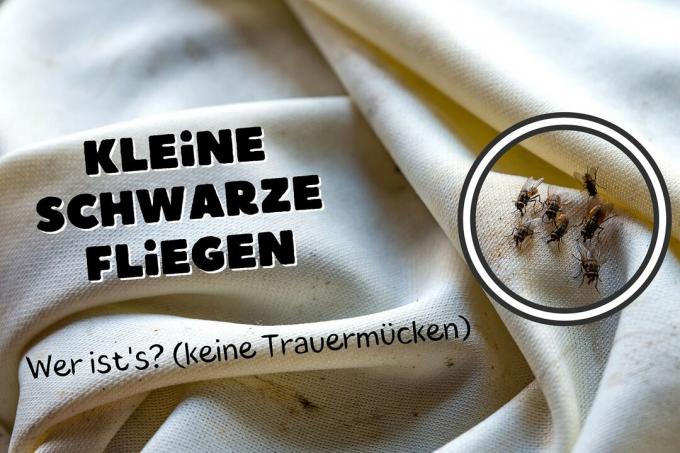
Table of Contents
- fungus gnats
- Possible other fly species
- aphids
- Common window fly
- house window fly
- march fly
- fruit flies
- mushroom flies
- butterfly mosquito
- Fight
- Prevent
- frequently asked Questions
Small black flies in the apartment are usually fungus gnats. But that doesn't necessarily have to be the case, there are also a few other types.
In a nutshell
- often difficult to identify which insects are involved
- mostly they are fungus gnats, rarely other species
- not all harm plants or even humans and animals
- Fighting with adhesive boards possible
- Prevention is best with insect screens
fungus gnats
When small black flies spread throughout the home, it is often the first thing that comes to mind fungus gnats (Sciaridae), especially if there are also many potted plants in the rooms. But not every little fly is a fungus gnat. Due to the tiny size of the insects, however, it is often difficult to distinguish and identify the individual species with certainty. Characteristics of the fungus gnat:
- Body length up to 7 mm
- very slim shape
- dark base colour
- comparatively long legs
- lives in potting soil of indoor plants
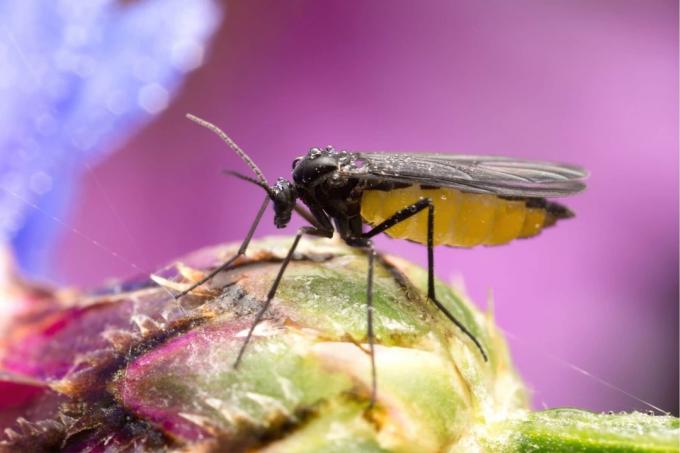
Notice: The fungus gnat is one of the most common Pests on houseplants, which is why blackflies are often assigned to this species first.
Possible other fly species
Below we list other small black flies, which at first glance resemble fungus gnats.
aphids
Normal aphids (Aphidoidea) on plants are difficult to confuse with fungus gnats, but there are winged specimens that can look similar on casual inspection.

- a few millimeters in size
- green, black or brown
- often without wings
- lives as colonies on plants, sucks plant juices
Common window fly
These mosquitoes (Sylvicola fenestralis) actually live outside, but every now and then they get lost in the house and then like to sit by the window. Since the larvae feed on rotten potatoes, they can also reproduce indoors under certain circumstances.

- up to 6 mm long
- dark basic coloration, rarely lighter
- long legs
- mostly harmless, hardly causes any damage in the house
house window fly
The house window fly (Scenopinus fenestralis) is not a pest. The larvae are predatory and also represent the clothes moth after. That is why this insect in the house can be considered more of a beneficial creature.

- up to 6 mm in length
- slim physique
- dark base colour
- antennae comparatively short
- likes to sit by the window
Notice: If several of these animals can be found in the house, this can indicate an infestation with clothes moths.
march fly
This fly (Bibio marci) is also actually a mosquito. She lives outdoors and rarely strays into the house. There it never occurs in masses and cannot simply multiply.
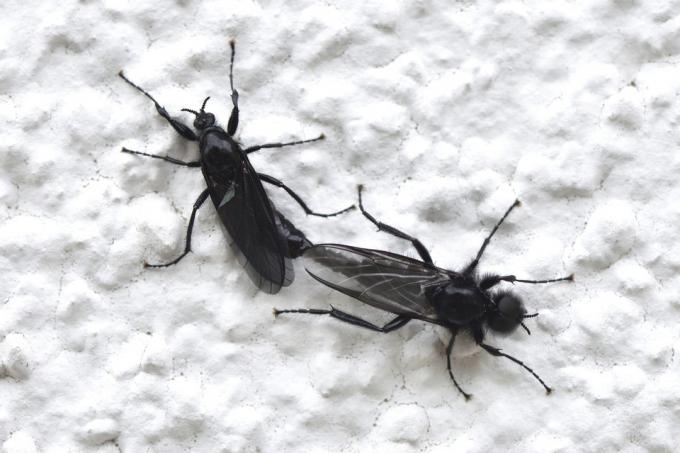
- up to 8 mm long
- elongated black body
- bright wings that can shimmer colorfully
fruit flies
Fruit flies (Drosophilidae) are found particularly in summer where a lot of ripe or overripe fruit is stored. They are usually easy to distinguish from the fungus gnat because they are a bit clumsier and not as dark.

Source: Reinhold Moller, Drosophila (Drosophila melanogaster)-20200607-RM-210232, Edited from Plantopedia, CC BY-SA 4.0
Other features:
- a few millimeters in size
- Body often reddish or orange, rarely dark
- is attracted to fermenting fruit
- does not live in potting soil
mushroom flies
Mushroom flies can get through forest mushrooms, rarely purchased mushrooms are also introduced. The larvae feed on the fungi. The development takes place very quickly, so that it can happen that adult animals then fly around in the house. However, they are harmless and will disappear on their own since they have no means of subsistence in the house.
butterfly mosquito
Butterfly gnats (Psychodidae) are not found in the house quite as often as the fungus gnat, but individual specimens can still get lost inside. The so-called septic fly is attracted to toilets and septic tanks and can then multiply in large numbers.
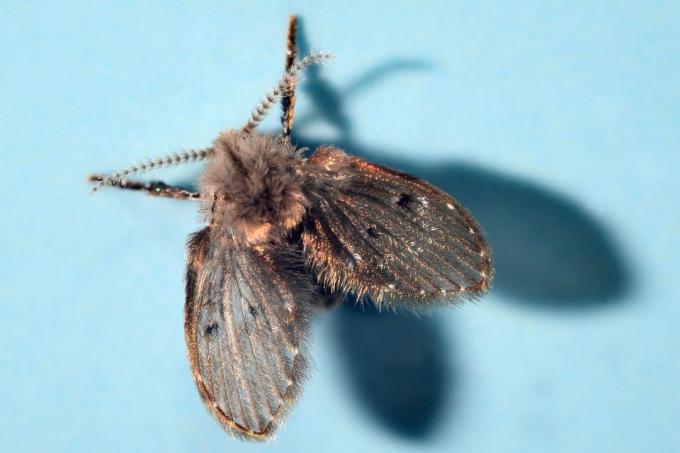
Characteristics of butterfly gnats:
- Body length up to 5 mm
- dark base colour
- butterfly-like wings
- not as slender as the fungus gnat
Fight
It is usually not too difficult to fight adult specimens. Depending on how active the insects are, the vacuum cleaner can be helpful. It can also be used to vacuum and clean cracks and crevices.

Yellow panels are suitable for potted plants. Sticky traps catch flying insects in the living room. There are special traps for fruit flies.
Chemical control with appropriate insect sprays is usually unnecessary and harmful, especially if there are pets in the apartment.
Prevent
Preventing small blackfly infestations is more important than control. Note the following tips:
- Check new potted plants carefully and set them up separately for a while
- Don't leave fruit lying around
- consume ripe fruit soon
- Provide windows and doors with insect screens
- Check indoor plants regularly
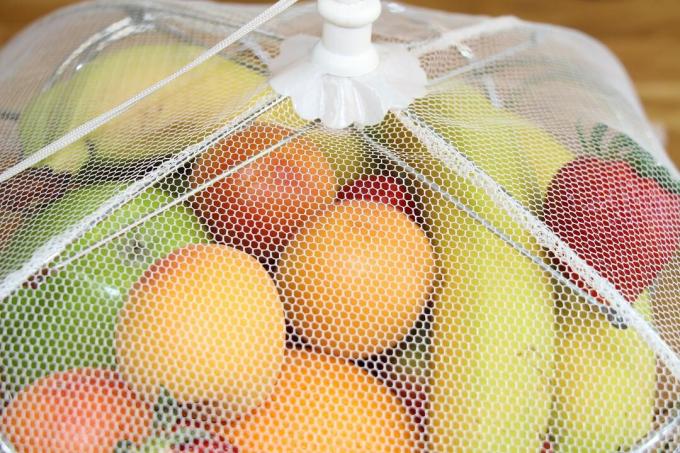
frequently asked Questions
The causes always depend on the respective insect species. You often buy eggs, larvae or adult animals with fruit or new potted plants. Open doors and windows without insect protection also invite species to fly in that do not actually live in the house.
It is not always necessary to catch every single specimen. However, when the flies appear in masses, they quickly become so annoying that you no longer want to have them in the house. It is often enough to eliminate the cause of the infestation, and the insects then gradually die out.
The adult flies rarely do any significant damage. The situation is different with the larvae. These often feed on roots or suck plant juices.



